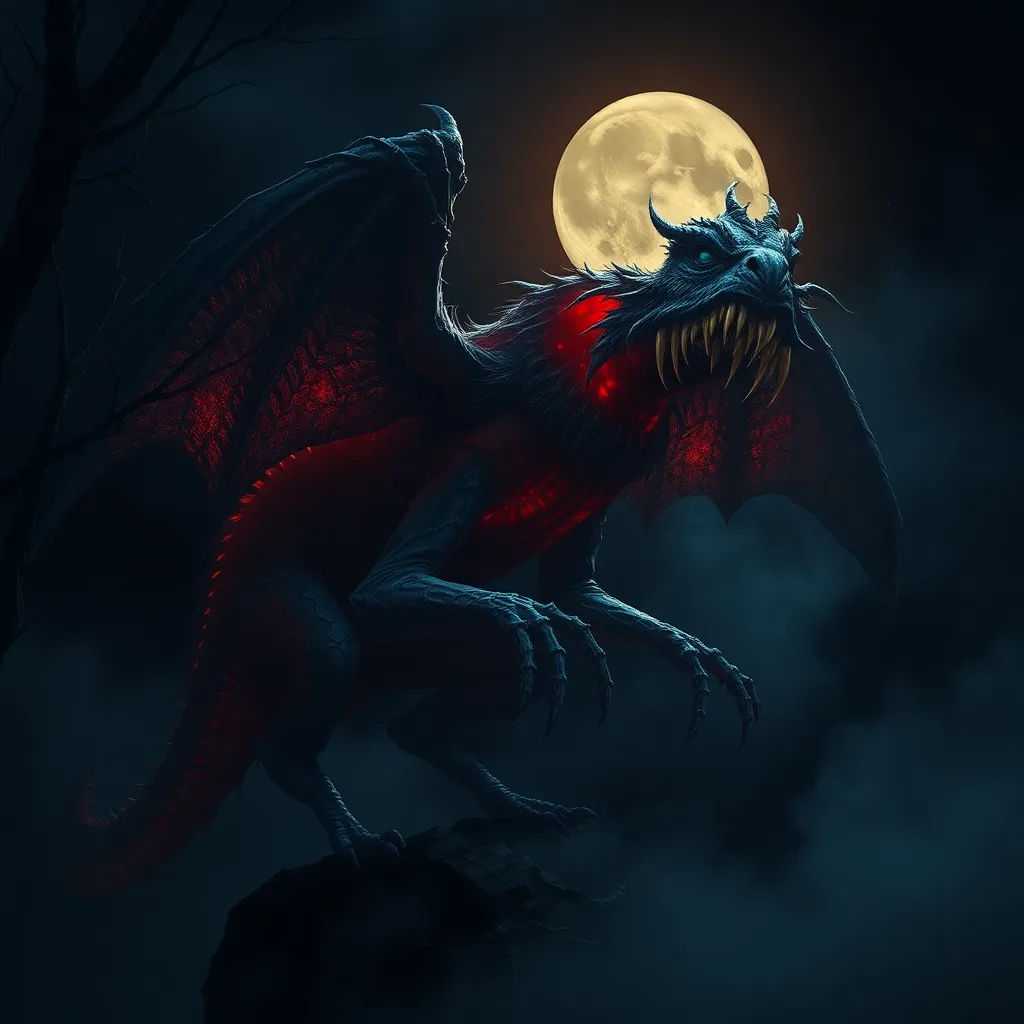The Tengu’s Transformation: Investigating Their Ability to Shape-Shift and Change Form
I. Introduction
The Tengu, a fascinating creature from Japanese folklore, has captivated imaginations for centuries. These beings are often depicted with human and avian features, embodying both the mystical and the mischievous. Their dual nature represents a significant aspect of Japanese mythology, illustrating the complexities of the human condition and the natural world.
Shape-shifting, a recurring theme in various cultural narratives, serves as a powerful tool for storytelling. It allows characters to transcend their physical limitations, exploring different facets of identity and morality. This article aims to delve into the nature of Tengu transformations, uncovering their historical roots, cultural significance, and modern interpretations.
II. Historical Origins of Tengu
The origins of Tengu can be traced back to the Heian period (794-1185), where they were first depicted in art and literature. Initially, Tengu were seen as malevolent spirits, often associated with the mountains and believed to abduct or deceive travelers.
Over time, the perception of Tengu evolved, influenced by various cultural shifts. By the Kamakura period (1185-1333), they began to be associated with the samurai and became symbols of martial prowess. The intertwining of Tengu legends with Buddhism and Shintoism further enriched their narrative, leading to a dual portrayal as both protectors and tricksters.
A. Early depictions and myths surrounding Tengu
In early texts, Tengu were described as bird-like creatures with the ability to fly and change forms. They were often blamed for natural disasters or misfortunes, reflecting the fears of the unknown in ancient Japanese society.
B. Evolution of Tengu folklore through the ages
As Japan transitioned through different historical periods, the stories of Tengu transformed. During the Edo period (1603-1868), they became more benevolent figures, often depicted as guardians of the mountains and forests, reflecting a growing reverence for nature.
C. Influence of Buddhism and Shintoism on Tengu stories
Buddhism introduced the idea of enlightenment and the moral dilemmas faced by individuals, which became intertwined with Tengu narratives. Similarly, Shinto beliefs emphasized the connection between humans and nature, further shaping the Tengu’s role as mediators between the two realms.
III. The Nature of Shape-Shift: Myth vs. Reality
Shape-shifting is a prominent theme in folklore, serving as a bridge between the mundane and the supernatural. In the context of Tengu, this ability symbolizes their role as intermediaries, capable of traversing both worlds.
As mythological entities, Tengu embody the complexity of human emotions and experiences. Their transformations can be seen as metaphors for personal growth, moral lessons, and the struggles of identity.
A. Definition of shape-shifting in folklore
Shape-shifting refers to the ability of a being to change its physical form at will. This phenomenon is prevalent in many cultures, often representing transformation, adaptability, and hidden truths.
B. Tengu as intermediaries between humans and the supernatural
Tengu, with their dual nature, serve as messengers of the divine and the earthly. They can guide humans toward enlightenment or mislead them based on their actions. This ambivalence makes them compelling figures in Japanese folklore.
C. Analysis of shape-shifting as a metaphor in Tengu lore
The ability to change forms often reflects the internal struggles of characters within Tengu stories. It highlights the fluidity of identity and the impact of choices on one’s path.
IV. Types of Tengu and Their Transformations
Tengu are categorized into various types, each with distinct characteristics and transformative abilities. Understanding these differences is crucial to grasping the full scope of Tengu lore.
A. Distinction between different types of Tengu (e.g., Karasu Tengu, Hōbōgami)
- Karasu Tengu: Often depicted as crow-like beings, they are known for their cunning and intelligence.
- Hōbōgami: A more benign form, these Tengu are associated with good fortune and protection.
B. Common forms and transformations seen in Tengu legends
Tengu are known to transform into various animals, humans, and even inanimate objects. These transformations serve to convey moral lessons or illustrate the consequences of hubris.
C. The symbolism behind specific transformations
The act of transformation often symbolizes deeper meanings, such as:
- Adaptability in the face of challenges
- The duality of good and evil
- The quest for identity and self-discovery
V. Cultural Significance of Tengu Transformations
Tengu’s ability to transform holds significant cultural implications, reflecting societal values and beliefs throughout history.
A. Tengu as protectors and tricksters in society
The dual role of Tengu as protectors and tricksters illustrates the balance between chaos and order. They remind society of the importance of humility and respect for nature.
B. The role of transformation in moral lessons and cautionary tales
Tengu stories often serve as cautionary tales, warning against arrogance and the consequences of straying from moral paths. Their transformations highlight the importance of self-awareness and accountability.
C. Impact of Tengu shape-shifting on Japanese art and literature
The fascinating lore surrounding Tengu has inspired countless works of art and literature, from traditional woodblock prints to contemporary novels. Their shape-shifting nature continues to captivate artists and storytellers alike.
VI. Modern Interpretations of Tengu and Their Abilities
In contemporary culture, Tengu have found new life in various media, such as anime, literature, and video games, reflecting changing perceptions of their transformative abilities.
A. Tengu in contemporary media (anime, literature, video games)
Modern interpretations often portray Tengu as complex characters, grappling with their identities and roles in a rapidly changing world. They are depicted as heroes, anti-heroes, or even comedic figures, showcasing the versatility of their lore.
B. Changes in the perception of Tengu transformations over time
As society evolves, so too does the portrayal of Tengu transformations. While once feared, they are now often embraced as symbols of resilience and adaptability.
C. The relevance of Tengu shape-shifting in modern discussions of identity
The theme of transformation resonates with contemporary discussions surrounding identity, as individuals navigate the complexities of self-perception and societal expectations.
VII. Comparative Analysis: Tengu and Other Shape-Shifters
The concept of shape-shifting is not unique to Tengu; many cultures feature similar entities, offering rich avenues for comparative analysis.
A. Similarities between Tengu and shape-shifting entities in other cultures (e.g., werewolves, skinwalkers)
Like Tengu, other shape-shifting beings such as werewolves and skinwalkers embody duality, representing the tension between civilization and the wild.
B. The role of transformation in global folklore
Transformation is a universal motif in folklore, often symbolizing change, growth, and the human experience. It serves as a powerful narrative device in stories worldwide.
C. Insights gained from comparing Tengu with other mythological figures
By examining Tengu alongside other shape-shifters, we gain insights into cultural values and beliefs, revealing the shared human experience across different societies.
VIII. Conclusion
The exploration of Tengu transformations reveals a rich tapestry of cultural narratives, historical evolution, and contemporary relevance. Tengu serve as both protectors and tricksters, embodying the complexities of identity and morality.
As we reflect on the enduring legacy of Tengu in folklore and culture, it becomes evident that their shape-shifting abilities will continue to inspire and provoke thought in future generations. The ongoing fascination with Tengu invites further research and exploration into the depths of shape-shifting myths and their significance in understanding the human experience.




